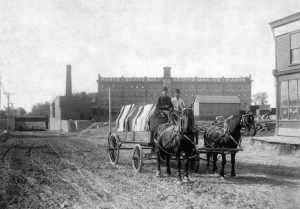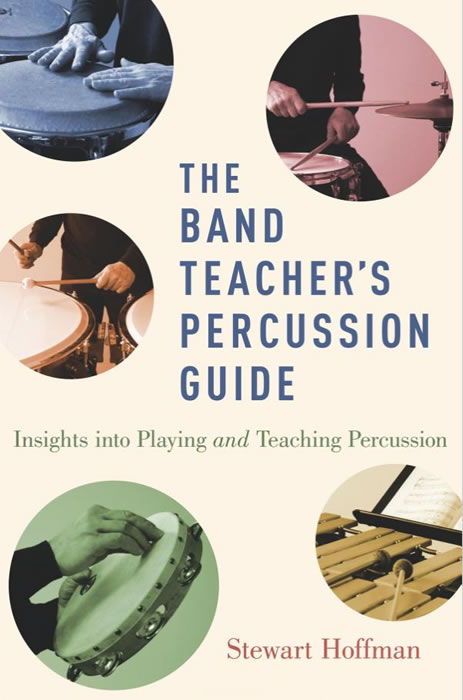
The Heintzman factory in Toronto’s “junction”.
Look carefully and you can still see the faded letters that spell “Heintzman and Co.” on the south wall of an elegant, eight-story building half a block up from the corner of Toronto’s Queen and Yonge. From 1911 until 1971, “Heintzman Hall” was the nerve centre of what had been the most prestigious of all the piano manufacturers that this country ever produced – and there were no fewer than 28 of them in the early 1920s. Those were the days when a house wasn’t a home without a piano in the parlour, and Heintzman met the demand for instruments with a network of 18 branch stores and 13 distributors coast-to-coast.
Today, Heintzman pianos – at least, those whose pedigree dates back to 1860 when Theodore Heintzman is said to have single-handedly assembled an instrument in his Toronto kitchen – are readily found in schools, conservatories and homes throughout the country. Many have been battered about for decades. Some are neglected family heirlooms, receiving about as much attention as the eight-track tape deck packed away in the basement. But the Heintzmans that have weathered the years – that have not succumbed to dry air or humidity or dozens of missed tunings – provide proof of the instruments’ reputation: that their components and sound were of the highest quality, and that the great Heintzman uprights were, arguably, the best produced anywhere. When the company closed its factory doors for good in 1986, one of the last in Canada’s industry to do so, it pretty much ended an era.
So it comes as a surprise to walk into a local music store and discover the golden “Heintzman” stencil staring out off the fallboard of shiny, new, ebony uprights and grands. Although for Casey Siepman, the pianos’ Winnipeg importer, it’s simply good marketing sense to draw on the Heintzman legacy.
“It was a great old name, and I thought if I could take that name, and put it on a piano worthy of what a Heintzman used to be, then maybe we can make something of this,” he says, pointing to the pianos he is importing from the Czech Republic.
The Heintzman Piano Company Beginnings
When Theodore Heintzman arrived in Toronto in 1860, he brought with him the old-world skills he had honed while apprenticing in his native Berlin. Heintzman and Co., incorporated six years later, was a success from the start, but it was son George who was the driving force behind the company’s growth. Legend has it that, to garner publicity, he rode the cow-catcher on the first transcontinental passenger train to Vancouver in 1887. And in 1888, George insisted on shipping pianos to the Indian and Colonial exposition in London, England, where Queen Victoria expressed amazement that such a product could come from the colonies. By 1890, Heintzman and Co. was one of the largest manufacturing firms in Toronto, employing 200 craftsmen and producing 1,000 pianos a year from a factory in the city’s west end.
In 1911, the doors opened to Heintzman Hall, home to what the early publicity dubbed “the most beautiful warerooms in the British Empire”. With brass doors, a majestic, marble staircase that would have been the envy of Norma Desmond, pillars, stained glass windows, Oriental rugs, and potted ferns, the building embodied all the dignity and refinement that the name Heintzman had come to represent.
But all of Heintzman Hall’s opulence was just a backdrop for its raison d’etre: the hundreds of grands and uprights of the finest polished woods, crafted by the best cabinet makers and technicians of the day. Glenn Gould practised on the nine-foot grand in the sixth floor artist’s room. Oscar Peterson occasionally dropped in for an impromptu performance on the showroom floor.
Verne Edquist on Heintzman Pianos
Verne Edquist, head tuner, tone regulator, and assistant manager of the grand piano department at Heintzman in the ’50s and ’60s, is somewhat of a legend himself. He was also Glenn Gould’s technician, and the fastidious pianist’s second set of ears during recording sessions.
“I think”, says Edquist, “that you’ve come to the holy grail of the Canadian piano industry with the Heintzman upright.” His own upright dates from the late ’20s. A basic, workhorse model, it was built to weather the onslaught of music students in schools and conservatories across the country. And when Edquist draws a series of chords from the instrument’s upper register – round, rich, cathedral-like chimes – they seem to hang, miraculously, in mid-air.
The Heintzman sound was no accident. The circular, acoustic rim in the corners of the soundboard, says Edquist, “was scientifically placed to give maximum resonance.” The Agraffe bridge was patented in 1873. A raised bar running across the upper octaves of the instrument’s cast iron frame, its tiny holes guide the taut, treble strings. “The energy went into this bar,” says Edquist, “and the tone would resonate in the heavy cast iron.” He points out the wooden shanks attached to the felt hammers. “You see how these are shaved on the sides? They cut down the mass because you don’t want a great big clunky hammer hitting the string.” Even today’s better grands don’t get it right, says Edquist. “Too much clunk and not enough tone.”
The Beginning of the End
The depression hit the company hard. With only 200 pianos produced in 1934, the most beautiful warerooms in the British Empire saw fridges and stoves added to their inventory. Government contracts to build boxes for telescopes and bomb sights helped get the company through the War, but the novelty of television brought further hardship in the early ’50s. By mid-decade, though, Heintzman piano production – fueled perhaps by pianist Liberace’s spectacular popularity – was up to about 1,000 annually. But it was still a far cry from the heyday of the early ’20s, when roughly 3,000 left the factory per year.
The big blow came in the ’60s. At the beginning of the decade, Yamaha was putting out 50,000 pianos a year – and twice that by 1967 – because of cheaper Japanese labour and more efficient production techniques, explains Bill Heintzman, a Heintzman vice president at the time. “And they were making a good product. We, along with a few other remaining piano makers, got swamped.”
The move to a state-of-the-art factory in Hanover, Ontario, in 1962, streamlined production, but cost the company dearly when the older, experienced technicians wouldn’t relocate. As a result, standards slipped to the point where technicians in the Yonge Street repair division, as one former employee says, had to “salvage some of the pianos coming from Hanover. We had to call and say there were parts missing here and there. Quality control was gone.”
In the ’70s, the financial problems became critical. Heintzman Hall was abandoned; an old marble factory, far from the downtown hub, would suffice for office space and grand piano production. The retail chain was sold next. Bill Heintzman, who, in 1964, had taken over another piano firm, Sherlock-Manning, tried to breathe life into the failing family business by merging the two companies under the name Heintzman Ltd. He gave it his best shot for three years. But when he took over, says Heintzman, the company, in effect, was bankrupt. In 1981, it was sold to the Sklar-Peppler furniture company, which hung in for five years before bailing out of the piano business.
The remaining Heintzman inventory and trademarks were sold to The Music Stand, a chain of retail stores then operating in Ontario. When that company started shipping inferior South Korean and American pianos into the country, only to slap Heintzman nameplates on them, a Federal Court judge ruled against the practice, stating that “there was clearly a deliberate attempt . . . to camouflage the fact that a change of source had occurred.” It finally seemed like the end of the line for the Heintzman name.
The New Heintzmans
But about two years ago, Siepman resurrected it. He says the Heintzman name was essential if he had any chance of breaking into an extremely difficult market. “If a good piano was going to be introduced into this country that wasn’t from the Orient, then it pretty much had to be a Heintzman piano,” Siepman explains.
His pianos do attract attention – perhaps even a pang of nostalgia. It’s a pang that becomes more acute upon reading the brochures associating them with the pianos that you “remember when you were growing up,” when “most of the people you knew had a Heintzman piano.” This may be treading on questionable territory, though Siepman, and the staff at Remenyi House of Music, where the pianos are sold locally, make a point of distinguishing these instruments from the stock spawned in Toronto’s west end.
But, are they good pianos? Paul Gilchrist, an independent piano technician in the Toronto area, thinks they are. “I think,” says Gilchrist, “they’re the best pianos made with the Heintzman name on them in the last 40 years. They’re precise, they’re neat, and the construction looks good, with solid maple bridges and solid spruce boards. Even the wood grain orientation gives them maximum strength.”
The upright comes mostly from the Czech Republic, while much of the grand, says Gilchrist, originates in Korea’s Young Chang factory, which has long been making pianos for European and American companies. Siepman looked to a company in the Czech Republic for the pianos’ scales – the design and plan that outline the interplay of the instrument’s different parts – because the craftmanship, although comparable to Germany’s high standards, comes at a lower labour cost. Gilchrist says that the Czech handiwork, as well as the German Renner action, gives the pianos a more European “flavour.”
“Asians tend to go for a hard, dense hammer,” he says, “while Europeans go for a slightly more resilient, softer hammer.” The piano, in general, is slightly less bright and aggressive than its Asian counterpart – more “classical”.
So Siepman went to a company in the Czech Republic, where he says craftsmanship, though comparable to Germany’s high standards, comes at a lower labour cost.
And the end result, says Gilchrist, is a “premium” instrument. The Heintzman name, it seems, shall endure on a fine piano.
A Look at Canada’s Storied Heintzman Piano Company
National Post, June 1999


